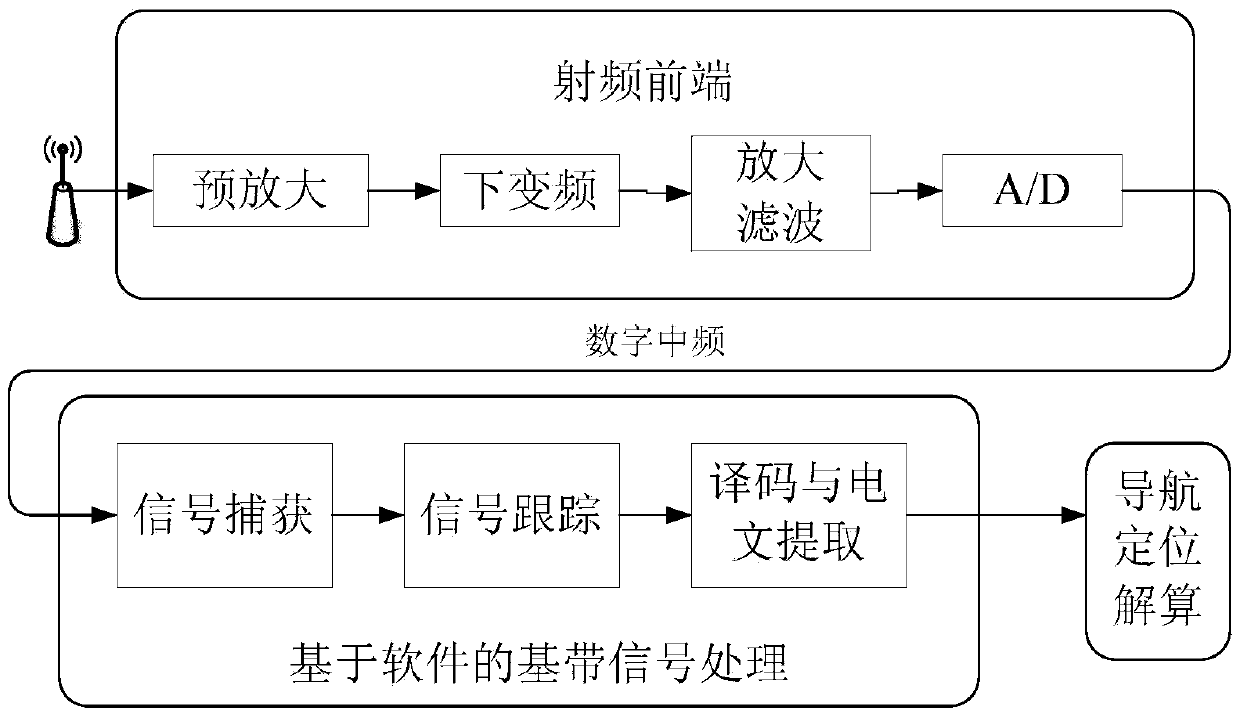Dynamic correction algorithm of GNSS receiver
A dynamic correction and receiver technology, applied in the field of navigation and positioning, can solve problems such as poor results
- Summary
- Abstract
- Description
- Claims
- Application Information
AI Technical Summary
Problems solved by technology
Method used
Image
Examples
Embodiment Construction
[0043] In order to describe the present invention more specifically, the technical solutions of the present invention will be described in detail below in conjunction with the accompanying drawings and specific embodiments.
[0044] The structure of the GNSS receiver used in this embodiment is as follows: figure 1 As shown, the GNSS receiver is composed of a radio frequency front-end, a baseband signal processing module, and a navigation positioning calculation module. The baseband signal processing module consists of sub-modules such as signal acquisition, tracking, decoding and navigation message extraction.
[0045] GNSS signal acquisition roughly estimates pseudo-code phase and carrier Doppler frequency, and the signal tracking module realizes accurate estimation of pseudo-code phase and carrier Doppler frequency, so as to realize despreading and demodulation of GNSS signals. The decoding and message extraction module obtains the navigation message through Viterbi decodin...
PUM
 Login to View More
Login to View More Abstract
Description
Claims
Application Information
 Login to View More
Login to View More - R&D
- Intellectual Property
- Life Sciences
- Materials
- Tech Scout
- Unparalleled Data Quality
- Higher Quality Content
- 60% Fewer Hallucinations
Browse by: Latest US Patents, China's latest patents, Technical Efficacy Thesaurus, Application Domain, Technology Topic, Popular Technical Reports.
© 2025 PatSnap. All rights reserved.Legal|Privacy policy|Modern Slavery Act Transparency Statement|Sitemap|About US| Contact US: help@patsnap.com



